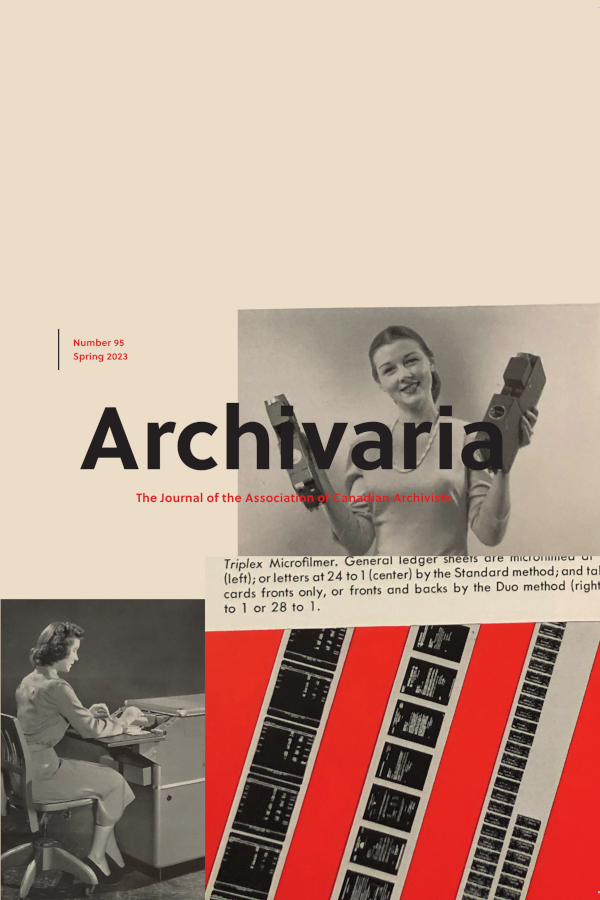Transferred, Preserved, and Destroyed
The Dominion Lands Branch’s Manitoba Files
Abstract
During the 1950s, the Province of Manitoba microfilmed and then destroyed thousands of files created by the federal Department of the Interior’s Dominion Lands Branch (DLB). These records, dating from about 1870 to 1930, were transferred from the federal government to the province in the immediate post-war period. They were drawn from a group of more than 5.6 million files occupying 11,640 square feet of office space in downtown Ottawa. During the Second World War, the civil servants responsible for the DLB files were pressured by their superiors to destroy the files in order to free up space and filing cabinets. DLB officials, although not trained archivists, took their responsibility as custodians of the records seriously and sought to prevent the wholesale and indiscriminate destruction of the files. They were supported by archivists who considered the DLB files to be valuable historical documents on the colonization of Western Canada. Eventually, the conflict between preservation and destruction was resolved by dispersing the records; some were transferred to the western provinces and territories, while the remaining files were deposited in the Public Archives of Canada. The first files to be transferred were those related to lands in Manitoba. This article clarifies the provenance of the DLB’s Manitoba files and argues for their enduring value as records of the history of settler colonialism in the province while also revealing the role of non-archivist civil servants as custodians of government records in the mid-20th century.
Authors of manuscripts accepted for publication retain copyright in their work. They are required to sign the Agreement on Authors' Rights and Responsibilities that permits Archivaria to publish and disseminate the work in print and electronically. In the same agreement, authors are required to confirm that "the material submitted for publication in Archivaria, both in its paper and electronic versions, including reproductions of other works (e.g. photographs, maps, etc.) does not infringe upon any existing copyright." Authors of manuscripts accepted for publication retain copyright in their work and are able to publish their articles in institutional repositories or elsewhere as long as the piece is posted after its original appearance on archivaria.ca. Any reproduction within one year following the date of this agreement requires the permission of the General Editor.





